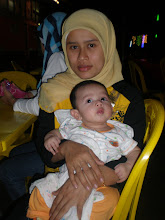While reflecting about my teaching I find myself recognizing just how large of an impact a teacher and course can be on a student. I used to always say that I taught physics, but now that sounds incomplete and I find myself more often saying I teach students. Students learn so much when they attend a physics lab. Students are also practicing communication skills, sharpening their analytical skills, and being exposed to other people’s value systems. While students had always been learning such things in my classroom, it is only in the last few years that I have come to appreciate this layered nature of the classroom and altered my classroom practices to enhance the students’ learning.
By defining education so broadly I certainly take on a large responsibility to organize my courses and conduct myself in such a way that allows students to achieve these goals. Attention must be paid to every detail, from the selection of material down to hand gestures, since all will have an impact on the students. For example, non-verbal behaviors may help to express a teacher’s excitement for the material. There is little chance students will get excited about physics unless they see that the teacher is visibly animated. If done well, every action and activity can be used to teach. It is only when teaching is approached with a holistic view will students be able to learn all they can.
Before I am accused of sounding like a “sage on the stage” I should be clear that equal emphasis is placed on what the students are doing. I don’t believe the teacher should be the focus of the classroom; learning is a cooperative task. While listening to a teacher or reading a book may be modalities that work for some students, most learn more while actively participating. As the teacher, I have to supply the opportunity for participation and make sure there is a safe and comfortable environment for students. Students may find themselves operating demos or any number of activities that get the students thinking, talking or moving. On the less physical side, I have tried to employ techniques much like Eric Mazur’s Peer Instruction where students are responsible for supplying the information. Students generally are willing to participate as long as the expectations are made clear at the beginning of the course.
There are many benefits to keeping the learning process student centered. One is that Peer Instruction and other small group work allows the students to interact with each other and not just the teacher. This gives the students a chance to practice their various interpersonal and communication skills. Also, I have seen that when students work in small groups they tend to relax much more (and consequentially learn more physics). This collaborative effort gives the students some control over the learning process. Now students are teaching one another and are on a more even footing with the teacher. In order for students to work well in such an environment, the teacher needs to take on the role of facilitator. The teacher may not be the central figure, but they can not completely disappear, as they should be readily available to assist and intervene if needed.
I know it’s a cliché to say this but it’s true- the one constant in my teaching career. Through my teaching and mentoring I strive to teach students many skills, ones that will hopefully have a lasting impact on their lives. The classroom is a dynamic place where there are many layers of learning occurring at the same time. While the topic may be physics, the students are also learning more about themselves and how to interact with their peers.
